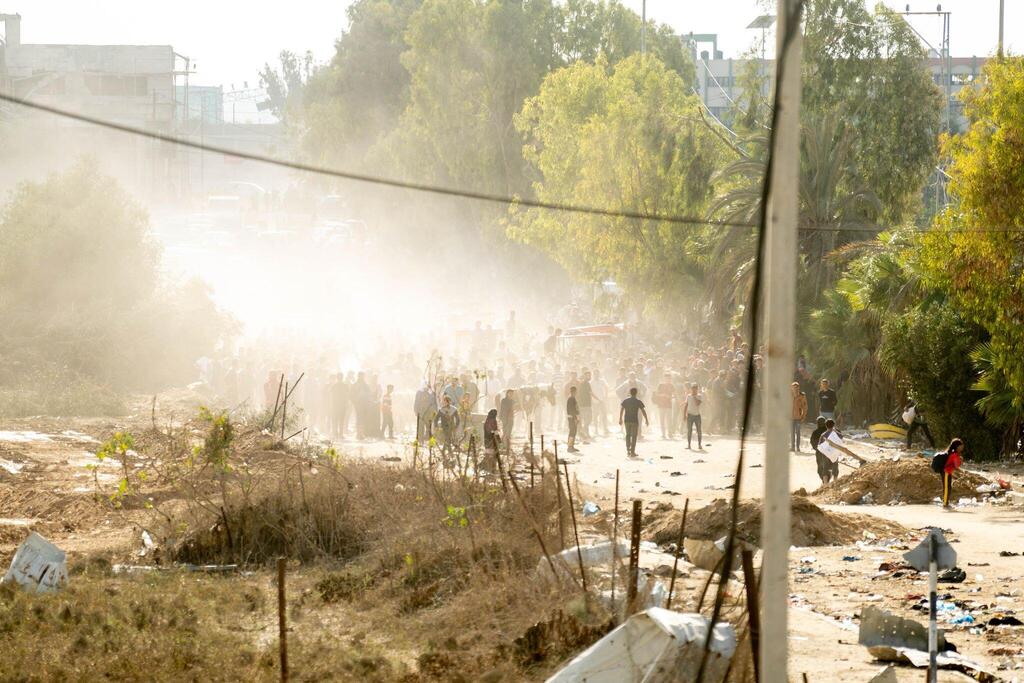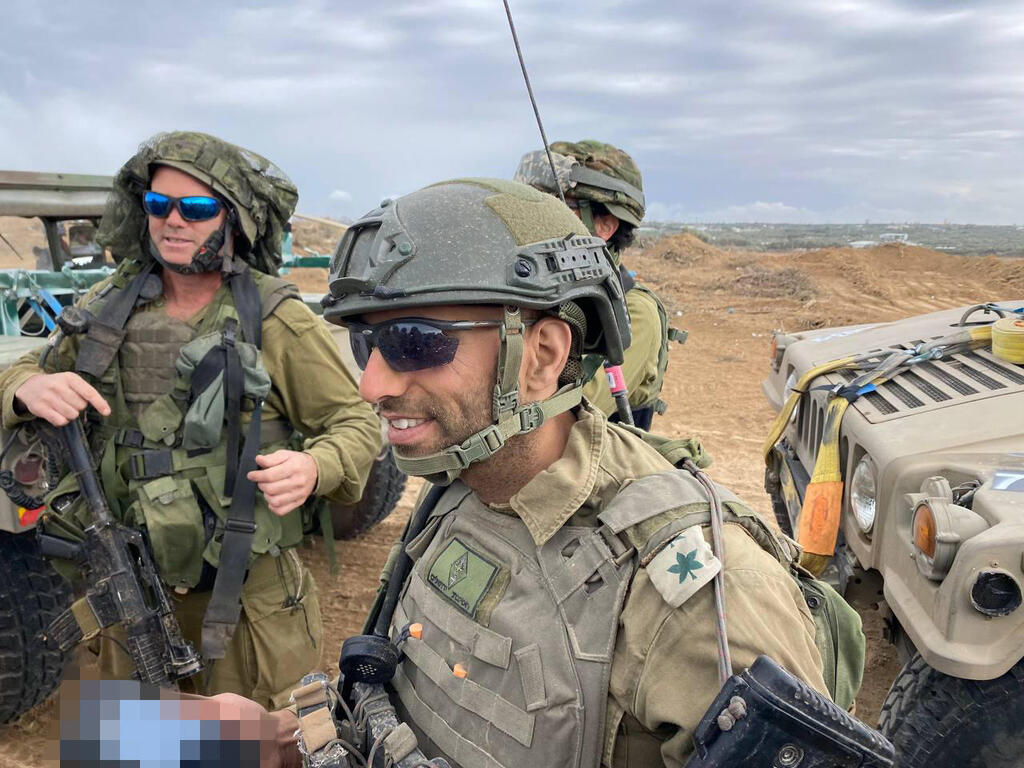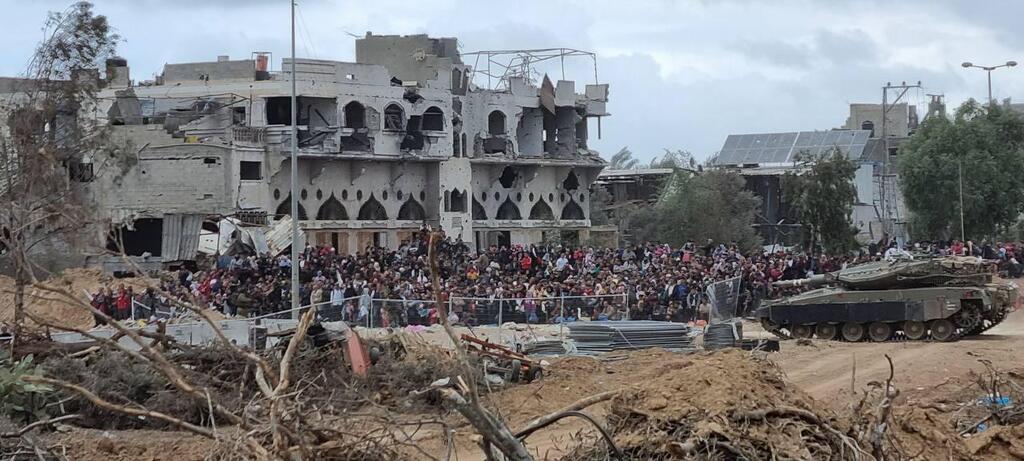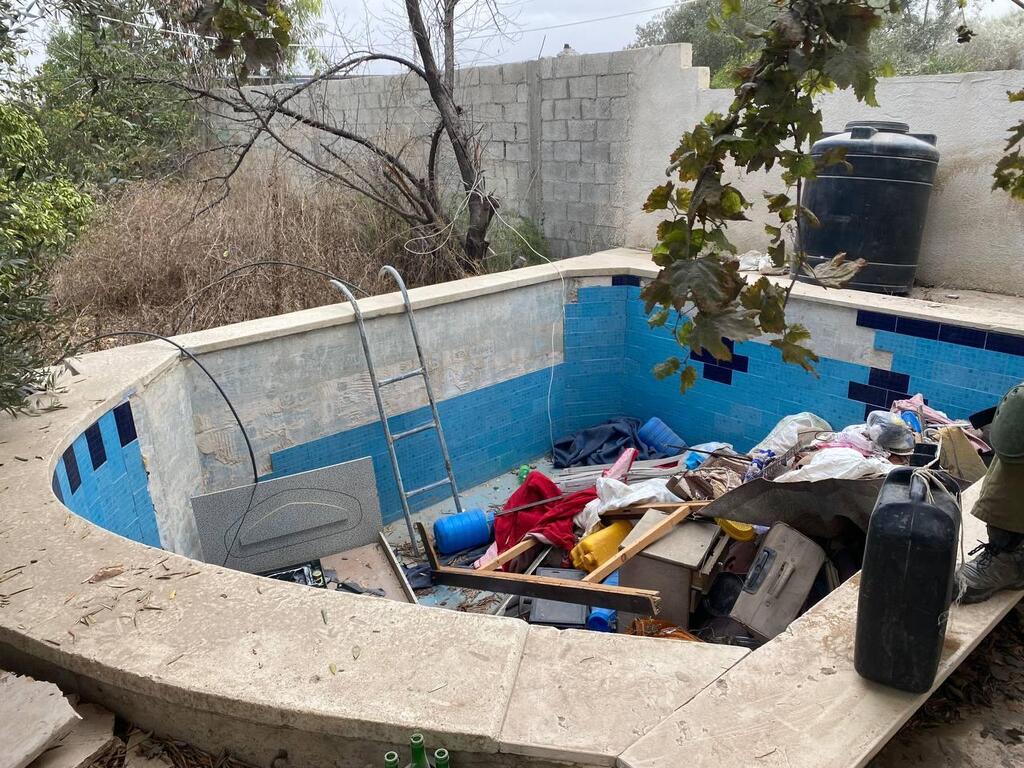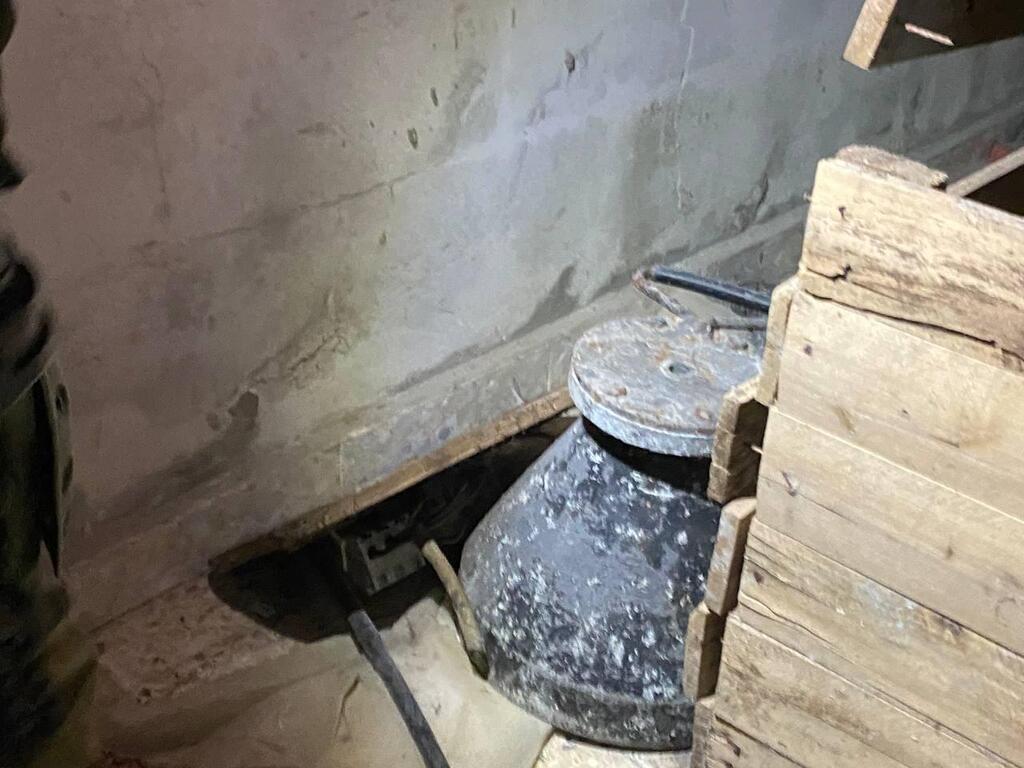Getting your Trinity Audio player ready...
IDF humanitarian corridor in Gaza
(Video: IDF Spokesperson's Unit)
In the heart of Gaza, where the world imagines intense scenes of fighting, the IDF is securing the humanitarian corridor of Gazan evacuees. The Salah al-Din road, which connects the north of the Gaza Strip with the south has already guaranteed safe passage to several hundred thousand civilians.
More stories:
"If there is a boy or girl who understands Hebrew, let him come running to us now. Don't be afraid. Don't be afraid," the soldiers call out. These calls are intended to reach the ears of any and all of the 38 children kidnapped from Israel into Gaza. Each time the soldiers called they had renewed hope that one of the children would identify himself, but they were disappointed each time.
The journey through the Gaza humanitarian corridor is like a journey into a different worldview. One hand waves an ID, the other holds a small child or personal belongings in bags. Women and men, children and the elderly, all move quietly. It is impossible to talk to them, but a brief glance is enough to see the frustration of the children, the exhaustion of the women, and the harsh reality they face.
From the checkpoint to the no-fighting area, the distance is less than a kilometer. According to IDF data, since the corridor was opened, more than 330,000 people have passed through it to safety. The biggest fear is that Hamas terrorists will blend in with the civilians and move south, but the IDF is trying to reduce the risk.
The responsibility for securing the humanitarian corridor was given to the Jerusalem Brigade, which is commanded by Col. Netai Okshi, who began his military career in the Golani Brigade. Along with securing the axis, the brigade fights against Hamas, and locates and destroys tunnel shafts and underground passages. On Friday, less than an hour after Hamas launched a rocket barrage at central Israel, reservists from the brigade's patrol battalion identified the terrorists responsible for the launches from the roof of a building, and directed the Air Force to eliminate them.
As troops carry out the special task of securing the humanitarian corridor, we have a rare glimpse into the IDF's world: They have to fight with a cruel enemy, while protecting the citizens in Gaza.
IED in the stairwell
After driving a few kilometers from Israel and crossing the perimeter fence, we arrive at the Zeitoun neighborhood in southern Gaza. The IDF started operating there only in the last few days, but the buildings that have become ruins are hard to miss. In the buildings that are still standing, the bullet holes in the walls bear witness to the intensity of the battles. I entered a building and the courtyard, to my surprise, had orange trees and a pool intact. A memory of better days, not long ago, when people lived here.
Orange trees and a pool can give a house an innocent look. But, after a military force inspected the area, the real picture was revealed: a cache of explosives, grenades and weapons in the stairwell. This is how an innocent-looking house can become a Hamas weapons warehouse and logistics center. Three of the IED's found in this house are cone-shaped and can pierce tanks, each weighing 15 kg.
Nearby, just 100 meters from us, the war continued in full force. The sounds of gunfire and explosions did not stop and served as a reminder of who were we fighting. Okshi said that, two hours before we arrived, terrorists tried to attack the soldiers.
"It was from inside one of the buildings. We sent forces to scan the area and currently we haven't found anything, but we are here under operational control over the entire area," he said. "The space here is not entirely free of threats. We have operational control in the field – and little by little we locate and destroy the enemy."
Okshi said that, even in the event of a cease-fire, the forces must remain alert and maintain their safety. He also explained the importance of evacuating the population, through routes such as the Salah al-Din road. "This is an operational situation. Both to avoid harming civilians on the one hand and to allow our forces a less complex fighting area," he said.
6 View gallery
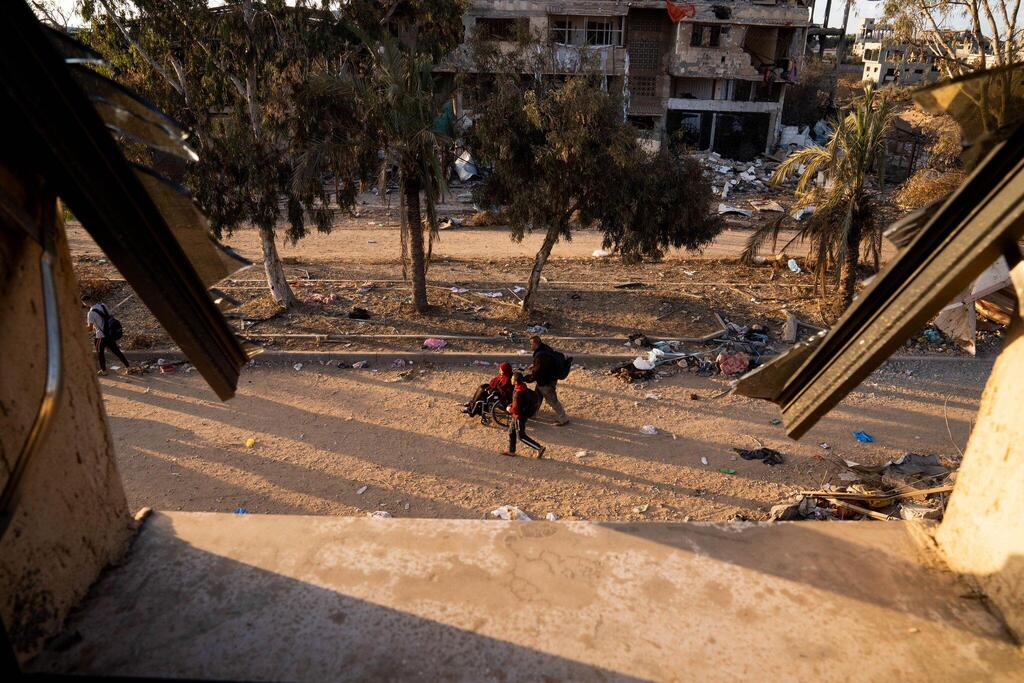

IDF oversees secure evacuation of all Gazan civilians
(Photo: IDF Spokesperson's Unit)
Lt. Col. Lotem Farah-Faran, commander of the 8119 Battalion, said that the IDF considers the evacuation of civilians a crucial task. "We tell them to move, we give them instructions, but in general we are trying to get as much of the population as possible to evacuate from Gaza," he said, adding: "Most of Gaza has already been evacuated." Regarding a cease-fire, he said: "In the end, I'm a fighter and I don't make decisions. I'd rather finish the story as quickly as possible and go home."







